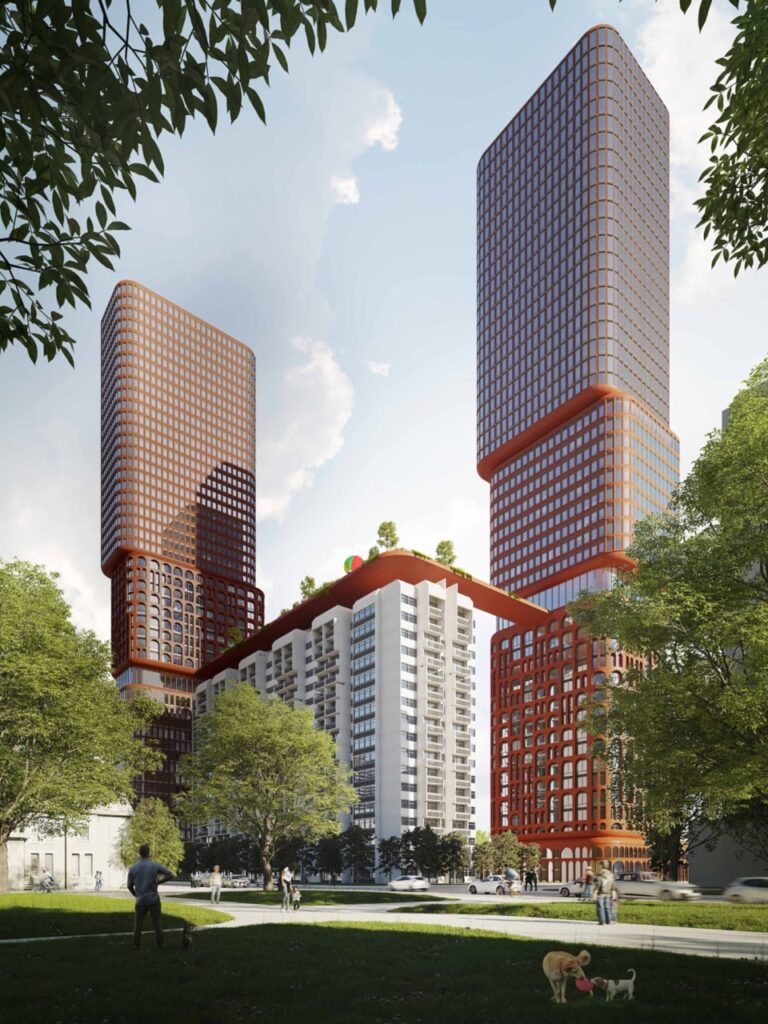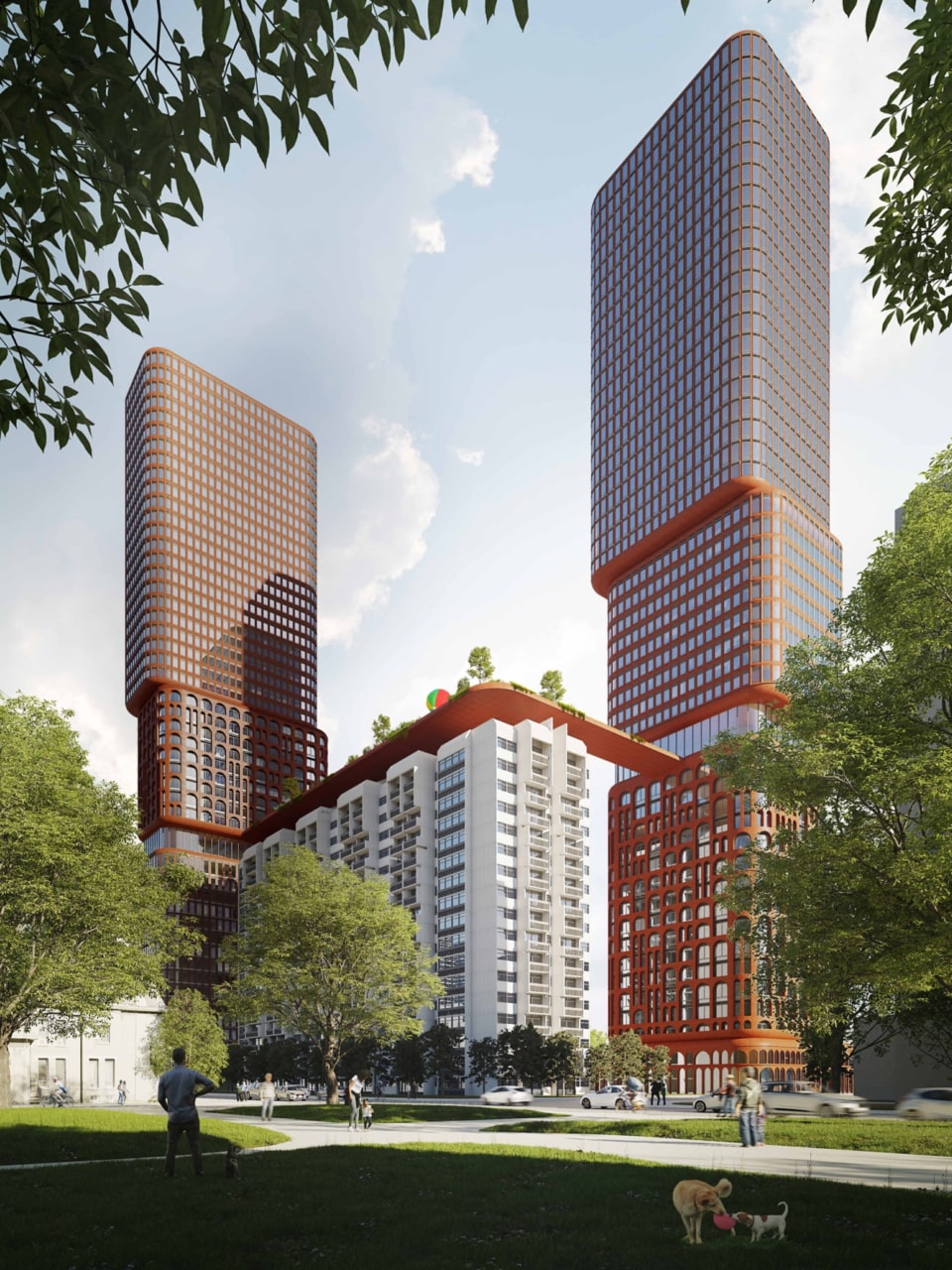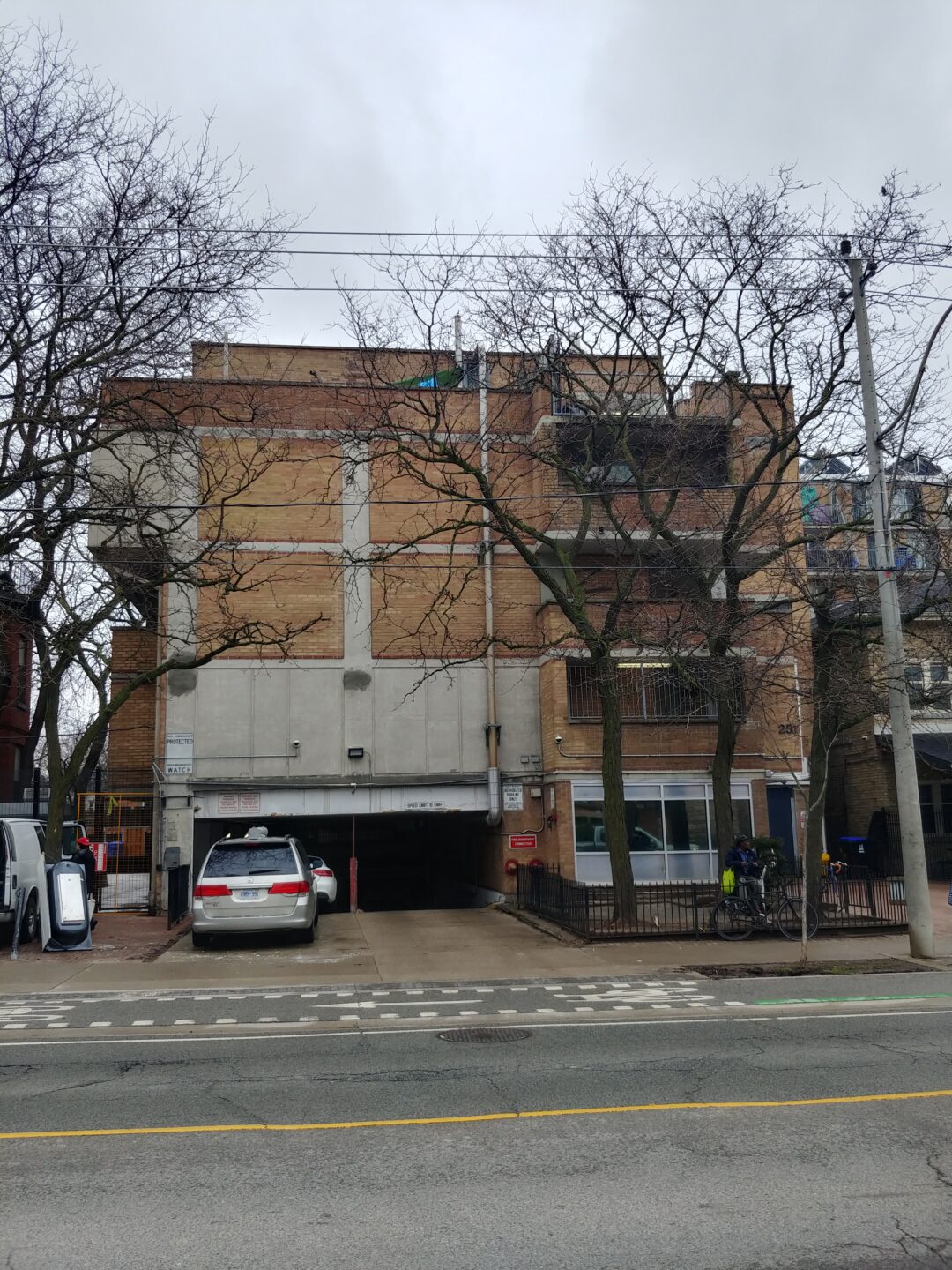By Laura Hull –
Associates of a developer proposing two new towers for 191-201 Sherbourne Street, in the heart of the Moss Park neighbourhood, were significant donors to the 2022 election campaign of Ward 13 Councillor Chris Moise.
Fitzrovia, a development and management company, is asking the city to approve infill residential buildings that would include a 49-storey tower on Sherbourne Street and a 47-storey tower along Shuter and Seaton Streets. They would contain 863 new residential units, as well as retail and community space, according to the proposal.
During last year’s municipal election, eight board members listed on Fitzrovia’s website, including CEO Adrian Rocca, plus his spouse, donated a total of $10,800 to Councillor Moise’s campaign, according to his campaign finance form. Thus, each donated $1,200, the maximum a single person can donate to a municipal election campaign.
Responding in a statement to the bridge, Moise said, “My understanding is that the voters, volunteers, supporters, and donors of my campaign came from all across the political spectrum, and they probably work in nearly every sector and industry.”
“My understanding is that my campaign raised the maximum amount approximately a month before election day. I was humbled that so many people believed in me, and since I first ran for office, I’ve been clear that I will always be fair and transparent as a councillor.”
At a community meeting on the project at the beginning of September, Moise was very supportive of the project. “This is a challenging area which needs revitalization, and I’m happy to see that what is proposed here on the 191-201 Sherbourne site is a rental property, not a condo as we often see,” he said.

Rendering for 191 Sherbourne, designed by PARTISANS for Fitzrovia Real Estate Inc.
“There’s a lot of community space in the plans in place here. And I’m happy to see that there’s public green space for the public as well to utilize.”
At the community meeting, Alex Josephson from the firm designing the building said the developer is talking about a “library, a community hub, and really taking the density down along the streetscape there to a more human scale.”
The site’s two residential buildings from the 1970s will remain according to the planning report submitted to the city. The application has passed the first couple of steps in the process, including the community meeting.
In December 2020, another developer submitted a proposal for much smaller buildings at the site that aligned closer to the city’s height by-laws for the area. However, the Ontario Line construction and its planned Moss Park station have increased developer interest in the area.
David Roberts, director of the University of Toronto’s urban studies program, thinks more transparency about campaign donations is needed. “There should be a way that it’s done in real time, so that people know where campaign money is coming from.” In particular, he said residents should know the potential links between municipal politicians and developments.
Robert MacDermid, a professor emeritus in York University’s politics department, commented that “Development is a cancer on municipal politics; it corrodes it in the most total way. It’s cheap to influence politics, and it’s easy to pay for campaigns and manipulate votes, which is distressing.”
Roberts is concerned about the implications for the Moss Park neighbourhood. “For so long, it’s been a place where individuals who couldn’t find affordable housing elsewhere lived in the downtown core,” he said.
“A lot of that affordable housing is in older buildings, but with the Ontario Line along with other municipal investments, there’s a lot of appetite to swap out or renovate these older buildings.”
“That will undoubtedly create displacement, which is troubling. We’ll be left with a space that’s much different, less vibrant, and less diverse,” Roberts added.
Catherine Osborne, a journalist focused on urban affairs and architecture, lives on Seaton Street, which will be part of the project.
“The area is all just Victorian houses, it’s historically designated. There’s no kind of other development on the street that would be anything like this tower. So it is a big thing,” she said.
“There are people on the street that are very much opposed to it. We’re not all united. Some people are fighting it, and some people are okay with it,” Osborne said.
At the community meeting, residents brought up concerns about affordable housing. Greg Gilbert, Fitzrovia’s vice-president of planning, responded, “we believe housing issues [sic] are because of lack of supply.”
“By building rental homes, we can help make a dent and keep a lid on the affordability crisis that’s happening in the city… Within the existing apartment complex there’ll be 596 existing units that will be totally rent controlled in perpetuity.”
“It’s also worth noting that with any development project in the city, there’s a community benefits charge, and the city will collect 4% of the project’s land value,” Gilbert added.
The developers are requesting amendments to Toronto’s official plan as well to the city’s zoning of the area to allow increased building height and density.
“Developers earn their profit through the rezoning of land,” said MacDermid. “That’s not via the market, it’s via political decision. All development is about land appreciation and zoning.”
Developers can also make money, he says, by having the province change the rules, “because all municipal decisions are subject essentially to provincial legislation, so they set the rules that municipalities have to enforce them and play by them.”
Regarding the potential link between Fitzrovia and Moise, MacDermid said, “It’s hardly surprising that developers decide that the best and quickest way to a profit is to try to influence municipal politics,”
“It can take running a candidate, it can take contributing to their campaigns, it can take making sure that they have the right staff, people, and advice. When it comes to elections, the most dominant one is giving money.”





1 Comment
I am fully behind this project. 45 year Victorian house homeowner. Moss Park which is really Cabbagetown has been alienated by City Hall for years and under invested and now the private sector recognition gets pushback? NIMBYISM and heritage are not plans they are walls.